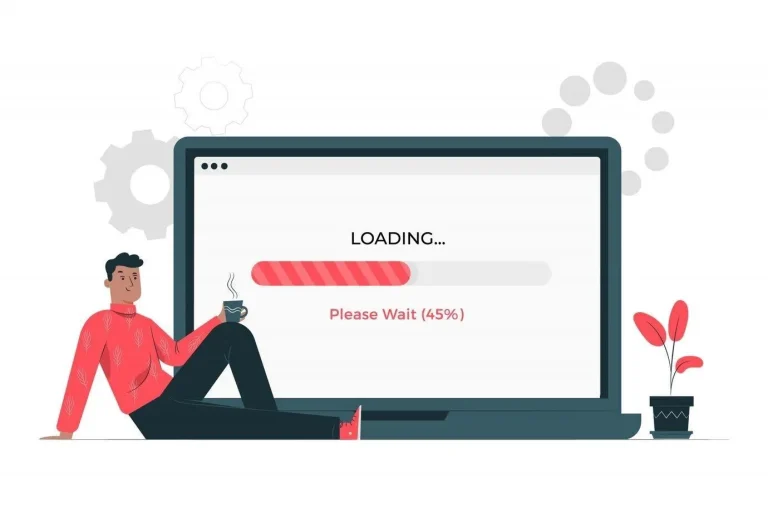Publishers have always tried to procure the best out of their user sessions — some publishers experiment with the increased number of ad units and bidder partners while the rest try to multiply the pageviews (higher pageviews = higher revenue). Among all the techniques, ad refresh is the most popular way of increasing the revenue per session (RPS). However, it wasn’t appreciated by the industry at first.
Fast-forward to today, we can see thousands of premium publishers refreshing the ads on their sites. What has changed?
The standard of refreshing ads.
Back then, there wasn’t any standardized system/technology to refresh ads (reloading ads). Today, several ad tech companies offer/accept ad refreshing. In fact, Google AdX ads can be refreshed under certain conditions. Here, we’ll help you understand the basics of ad refresh, how it improves revenue per session and how to implement it effectively. Let’s start with the basics.
Table of Contents
What Is Ad Refresh?
Ad refreshing, or ad refresh, requests and renders a new ad on the existing ad unit — while the user is on the page. The new ad will replace the existing ad. Typically, ads can be refreshed based on period, user actions, and events.
What’s pulling the publishers in? It’s obvious. Regarding monetization, the total time users spend on the page has been ignored completely. Ad refresh capitalizes on the time and lets you increase your revenue.
Will Refreshing Ads Reduce the CPM?
No, not at all. Your CPM will not be affected if you’re refreshing ads based on the accepted preset conditions.
Long answer:
Ad refresh looks like the easiest way to increase revenue. Isn’t it? You just have to hold a user on the page and start rotating the ads one after another, thus, rocketing your revenues.
Wait, hold on! What about the advertiser?
Advertisers pay to run their ads on your page as long as the user stays in. They assume the ads will be displayed until the user leaves the page. But now you’re planning to refresh the ad content. Will they agree to bid for your impressions?
It depends. Let us explain.
Case 1: You’re refreshing ads without any standard and violating many policies that Google and other ad exchanges set.
Result: Little to no ads. You won’t be getting any ads for your impressions. Even if you’re lucky to get bids, the eCPM would be extremely low.
How?
DSPs and ad exchanges are smart enough to know the ROI of your inventories. Viewability and CTR would be low in this case as you’re not allowing the user to view the ads properly.
Case 2: You’re refreshing ads based on preset (standard) conditions that Google and all other exchanges accept.
Result: You’ll receive the ads as usual and get incremental revenue.
So, you obviously want to follow the second case. What are those preset conditions, and how can you implement ‘ad refresh’ correctly?
Triggers and Implementation
You can refresh your ads based on a set of preset conditions. These conditions are commonly known as ‘triggers’. Basically, there are three types of triggers (as offered by Google). You can use any of them as a publisher to refresh the ads.
– User trigger
User triggers are based on user navigations. Examples include user engagement with the content by clicking a CTA, filtering the content on the search results, and forwarding the slides on a slideshow. So, if a user views hidden content by engaging with your CTA, you can refresh the ads.
– Event trigger
As the name implies, event triggers are solely based on events initiated by the publisher. For instance, refreshing the page to update the content (scores and current stats) can be considered valid.
– Time trigger
Time triggers rely on the time the user stays on the page. You can refresh your ads after a certain interval (60 sec, 120 sec, etc.).
How to Implement Ad Refresh?
You can implement ad refresh in the right way on your site(s) using the following:
To be frank, Google Ad Manager’s refresh is the de-facto option for publishers to refresh their ads. With the help of Ad Manager settings, you can declare the ad inventory that refreshes based on the aforementioned triggers. Or else, you can use the refresh function of the GPT tag.
Surprisingly, Google isn’t the best choice for both publishers and advertisers.
Best option to refresh ads
Now that you know Google offers ad refreshing; it’s time to consider the next option.
Header bidding wrappers/Sell-Side Platforms (SSP):
As a publisher, you might be working with an SSP or a header bidding wrapper to run header auctions (If not, you should). At present, a few of them help publishers refresh their ads with the help of proprietary technologies. Like Google, they can refresh ads by measuring a set of on-page factors and browser events.
So, you can either partner with them or implement ad refresh with Google. Remember we said Google isn’t the best choice for ad refreshing? Here’s why:
With Google, you can auto-refresh ads based only on the triggers. And that won’t work for many publishers. Let’s say your users stay on an article page for three minutes (avg).
You can’t utilize the user and event triggers in a typical article page. So, refreshing ads based on time intervals is all you have left. This has proven to be ineffective for both publishers and advertisers.
How are third-party ad refresh solutions better than Google’s?
In Google ad refresh, ads are being refreshed without considering many other factors. Even when the user isn’t active on the page, ads will refresh after a minute. This means the likelihood of a user engaging with the ad is minimal. So, depreciated CPMs for publishers.
On the other hand, many header bidding providers let you refresh ads only when certain important factors are met. They track various factors to find optimal situations to refresh ads and increase the revenue per session.
- They will implement smart ad refresh that measures meaningful user engagement and interaction with the ad. They ignore the ads that are on the screen but are not viewed or the ads that have been clicked out of mistake.
- They measure key performance indicators, such as page-level events, user scrolling, ad placement, viewability, CTR, and other user activities.
- They use granular data points to decide the optimal situation for refreshing ads and increasing impressions and CPMs.
- They follow industry standards set by IAB and follow the ideal refresh rate to refresh ads that lift user experience and your ad revenue.
- They optimize ad refresh and refresh rates for both desktop and mobile. Improving ad responsiveness across devices increases ad revenue with a positive user experience.
Ad refresh implementation can be a good ad monetization technology when it is done right. To do it right by checking all the optimal factors around, connecting with the leading adtech partner is essential.
If you have decent traffic and want to connect with trusted header bidding providers, contact us! We will connect you with good partner who best suit you needs and budget.
AMP Ad Refresh
Like normal web pages, you can refresh ads on AMP pages. If you want to know the technical implementation, here’s a quick overview.
Page-level configuration:
You need to add a meta tag for AMP pages where you’ll be refreshing ads.
<meta name=”amp-ad-enable-refresh” content=”network1=refresh_interval1,network2=refresh_interval2,…”>
Here refresh interval denotes the refresh rate, which should be more than or equal to 30 seconds. And, regardless of the refresh interval, you can’t refresh the ads if it isn’t viewable for at least a second.
Slot-level configuration:
Now you must decide what particular slot on the page you want to refresh and add “data-enable-refresh=refresh_interval>” under amp-ad div. If you want to exclude any ad slot, you can add:
<amp-ad
…
data-enable-refresh=false>
Apparently, you need to set up header bidding to get demand partners for your ad impressions. We have a complete guide here.
Do’s and Don’ts of Ad Refresh
As mentioned above, ad refresh can hurt CPM/viewability if you aren’t doing it correctly. So, we have compiled a list of the important dos and don’ts of ad refresh for publishers. With these rules in your mind, you can confidently refresh your ad inventories, knowing you’re on the right track.
Do’s of Ad Refresh:
- Measure the engagement and fill rates before/after refreshing the ad inventories.
- Optimize refresh rate depending on user activities
- Be transparent with your demand partners about the refresh rate and measurement system.
- Monitor Revenue Per Session (RPS) as a success measure metric.
- Implement ad refresh on pages with engaging content.
- Do measure ad viewability while you refresh inventories.
- Do A/B test with different types of ad refresh triggers? Better yet, use a combination of triggers.
Don’ts of Ad Refresh:
- Do not refresh AdSense inventories.
- Do not refresh ad inventories if the user is not active.
- Do not display ads irrelevant to the page context or user interest. This will decrease engagement and interaction and make your pages unfit for ad refresh.
- Do not refresh ad inventories sold via direct campaigns.
Learn more about them in detail here.
IAB Ad Refresh Guidelines
IAB has some guidelines as well.
- While IAB doesn’t have any specific guidelines regarding refresh rate, it requires measurement vendors to detect site-initiated ad refresh* so that they can disclose the same to advertisers. As a publisher, you can make the basic information regarding refresh (examples include parameters, relative volume, and setting) – available for measurement partners. It isn’t mandatory as third-party tend to develop techniques to detect site-initiated refresh.
*Third-party measurement providers don’t need to detect user-initiated refresh as the user-initiated ad is equivalent to a regular ad impression.
- IAB requires publishers to refresh ads reasonably (based on the niche). Refreshing ads in very short intervals can lead to low-quality impressions that no advertisers want to bid on. In fact, demand partners can block you from their exchanges because of increased ad requests per user or session.
What’s Next?
You are now ready to refresh your ads. However, we’ll quickly examine the best practices while implementing the technique. As always, we want you to be a pro!
- In article pages, time triggers yield more impressions than other triggers, as user actions and events are little to none.
- There’s no one-size-fits-all solution here. Experiment with ad refreshing features from your header bidding wrapper and compare it with the impressions and revenue generated by Google ad refresh.
- Run A/B testing to find the optimal placements for ad refreshing. Refreshing non-viewable ads will yield no bids and reduce the viewability score on the buy side.
FAQs
Can I Refresh Google Ad Exchange Ads? If so, How?
Yes, you can refresh or reload Google AdX ads. But first, you need to declare the inventory you are refreshing in Ad Exchange rules. The declaration will help buyers know that they’re bidding for a refreshing inventory, the trigger behind the refresh, and the minimum interval b/w the refreshes (in seconds).
Can I Refresh a DFP Ad Unit that Is Enabled with AdSense?
No, AdSense ads cannot be refreshed as a policy violation. Google considers it a policy violation when you don’t declare the inventory that is being refreshed or improperly declare it.
Is Ad Refreshing Right for You?
We can’t say a simple yes or no. As a matter of fact, the answer ultimately depends on your readers and how they typically react to the ads on a page. Analyze the time-on-site and page load speeds with/without ad refresh. If you’re seeing any significant decrease in session duration, you might need to reconsider the way of implementation.
What’s the Impact of Ad Refresh on CPM and Viewability?
A smart ad refresh solution that ensures the user is active on the page improves eCPM and viewability over time.























